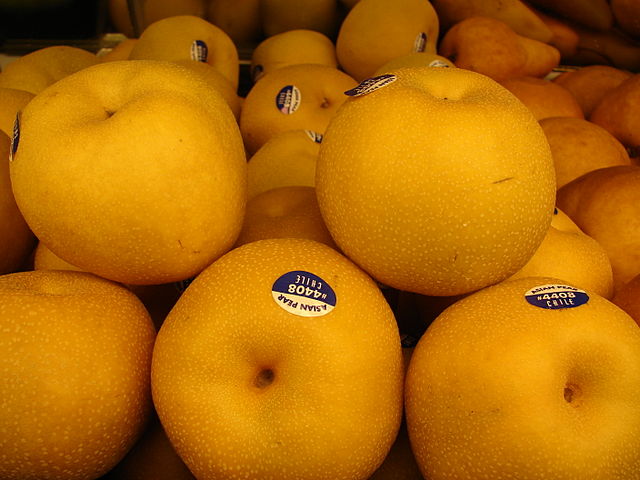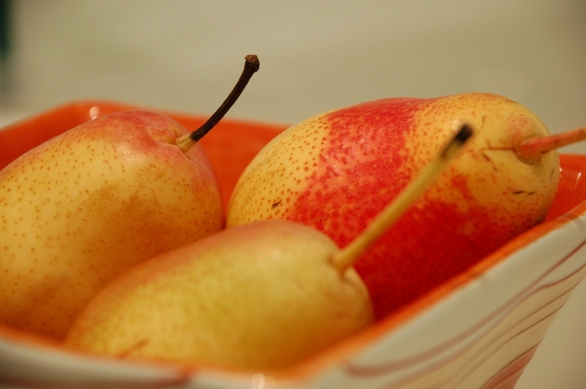Fruit stickers and Dante’s Inferno

I believe there is a special place in hell for people who put stickers on fruit.
This is more than a curmudgeonly gripe because sometimes beneath the simple and apparently harmless sticker is a basic misunderstanding about our food system and the retail environment in which many people try to buy local food and try to understand where what they’re eating comes from.
There are apparently 1,400 codes for produce. Whether it’s a kids’ cartoon ad slapped on a banana or a place-of-origin label with a PLU price look-up code (a five-digit number beginning with a “9” signifies “organic,” for instance) that adheres aggressively to a luscious red pepper that travelled 3,000 kilometres to get to your kitchen, a stickered fruit can mean that an episode of slight frustration and peeve will creep into your day. At least it does for me.
It’s a moment similar to the quest to find the lost and vanished end on a roll of Scotch Tape just before you bin the damn thing and start a new roll with its handy-dandy tartan starter tab already in place and just waiting for you to pull.
Actually, the place in hell for stickers is already defined for us: if you check Dante’s Inferno, part of the 14th century epic poem, The Divine Comedy. I’d categorize Fruit Sticker-ers at perhaps circle number-7 (“Violence”), or circle number-8, (“Fraud”).
The Circles of Hell, through which Dante journeys is, as he writes, the “realm … of those who have rejected spiritual values by yielding to bestial appetites or violence, or by perverting their human intellect to fraud or malice against their fellowmen.”
This is, of course, quite a full-on food exaggeration when you take it out of the context of our mortal souls and slip it instead into the framework of the commerce around a simple McIntosh apple or Bartlett pear. But I’ve encountered the little-sticker-bastard (LSB) on many occasions while browsing the grocery-store produce displays.
You can’t just eat the thing, and I don’t believe it can be recycled, so you have to peel them off all of your store-bought produce and toss them in the garbage. What a pain.
While it’s unlikely there’s intentional “fraud” in the realm of the LSB, though sometimes there is, then it’s a case of misinformation that approaches a willful ignorance, sloppy retail produce practices, and a bit of subterfuge – or a combination thereof.
Let’s start at the farmers’ market. While our love affair with farmers’ markets continues to be very warm and fuzzy – and don’t get me wrong: I love farmers’ markets and shop at my local downtown one regularly – there are occasions there where there is some duplicity, some neglected truth and misinformation.
Looking at the larger scope of a farmers’ market and beginning with the name itself, it’s possessed of an embedded signifier that conjures images of fresh, of local, of community, of authenticity. But that is not always the case: I certainly won’t call it outright intentional fraud, necessarily, but, again, let’s say it’s a misunderstanding.
At farmers’ markets, both large and small, there are generally two types of vendors: there are farmers and producers and there are re-sellers (who actually pay more to rent their market stalls), at least when it comes to fruit and vegetables. These two primary comestibles are usually very highly ranked on a food-purchaser’s shopping list, with perhaps only the butcher’s stall coming second at least for indoor markets.
However, in the past, there are have been vendors, especially at larger farmers’ markets, who are simply not farmers and who sell products – fresh fruit and vegetables especially – that look just like those that you’d purchase from a real honest-to-goodness farmer.
This is not to say that they are posing as farmers. They are, in fact, re-sellers. And very often, their fruit has stickers. If you wanted to, you could go and buy some big boxes of produce somewhere – Costco or a produce distribution terminal that is an important part of our food chain – and re-sell it at a farmers’ market.
I’m mean, there would be hoops and barrels to go through and around, but there is no reason you couldn’t do that. And more power to you if you can make a buck at it.

Some road-side stands you might see also portray a farmer-status and are re-selling produce – and not just the melons and other tropical fruits which, it should be obvious to just about anybody with an iota of food literacy, aren’t grown here.
These scenarios, some years ago, were pretty easy to discover, but to their credit, municipal farmers’ markets, like “my” Kitchener Market, have rightly cracked down on such re-selling, both charging them more to rent space – again, rightly so – than proper farmers and building in requirements (some municipalities have even pushed for legislation) that a market vendor is only allowed to sell a certain percentage of produce that they did not grow.
And, as a whole, a particular market may be beholden to having the majority of its vendors certified as honest-to-goodness farmers. That stricture, in fact, might be only 51%, so the bar is set pretty low. But it is good to see signs for “Farmer”and “Re-seller”clearly posted. (On a few occasions, I have purchased produce, ostensibly from a “Farmer,” but I highly doubt it.)
In grocery stores – actually this happens regularly – you can find a lot of “mis-stickering,” let’s generously call it. I’ve frequently pointed out to staff and had a little discussion with a fellow customer, who looked at me as if I had two cauliflower heads about the whole thing as I explained that these were not Ontario apples.
A week later, I happened to be back at one store where I asked about the LSB situation and their signage — it was South African apples selling as Ontario apples — and nothing had changed: it was the same mis-stickered fruit and no-one there seemed to care.
C’est la vie, I guess.
[Banner image/ http://www.starrenvironmental.com/ via Wikimedia Commons]

